Photo
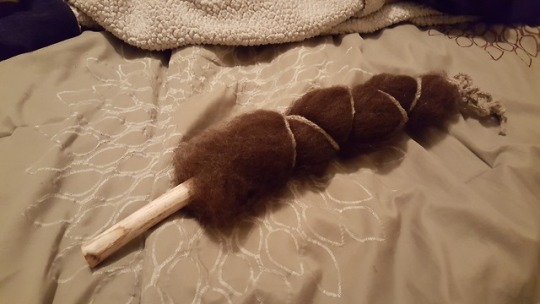
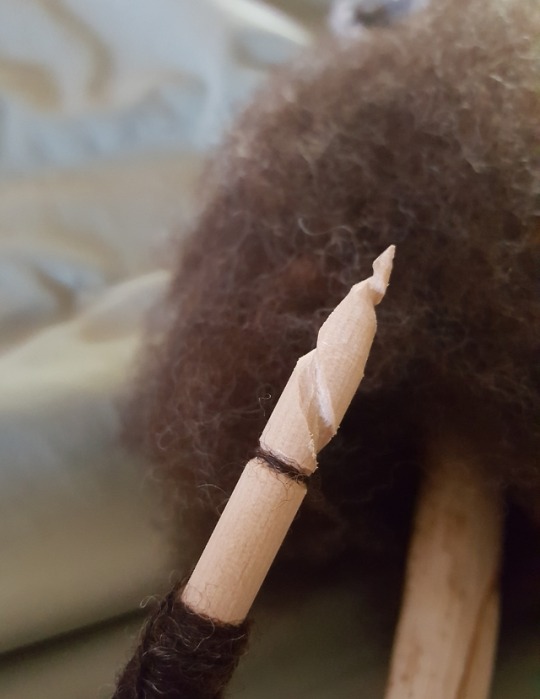
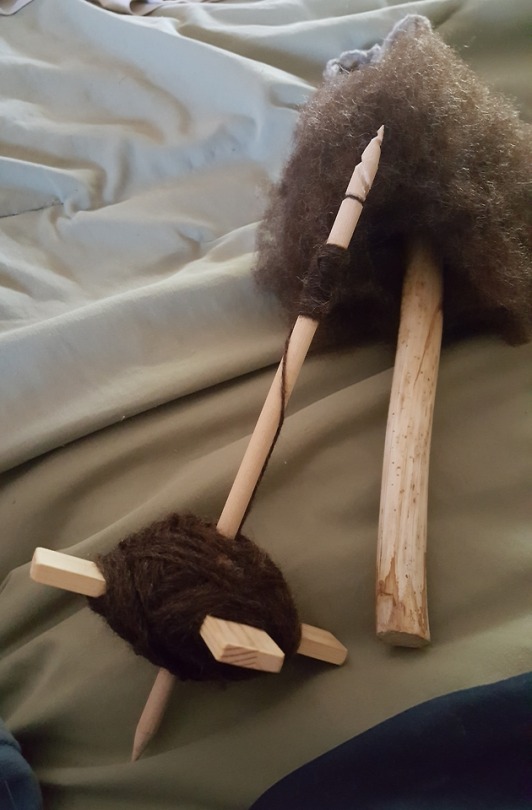
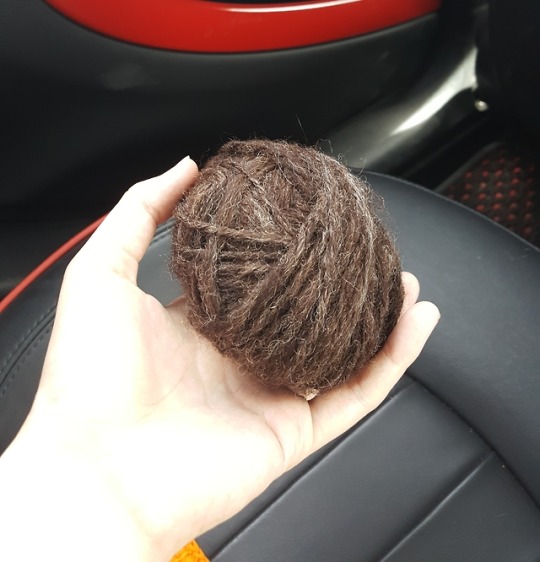
I sat in a chair one night, spinning alpaca yarn with a supported spindle, the white cloud of fluff trailing from my hand, when disaster struck. Something caught on my spindle, ripping the top from my hand, sending meticulously combed fiber spinning around the shaft of my spindle, tangling with the singles and invoking unbridled rage. Reversing the spin can allow you to try and salvage the top, but it's never quite the same. I'd gotten so sick of this happening to me that I grabbed a dried yucca shoot, sanded it down, cut a notch in the top end, and started using it as a hand distaff. And I'll never go back. Not wanting to use alpaca as 'practice' fiber, I instead started using wool top. I arranged strips of top into a batt, and rolled it onto the distaff so that the fibers run along the length, which I refer to as vertically dressed. Then you wind a cord or ribbon around to secure it, and draft from the bottom. What I didn't really think about at the time was that, because short draw requires both hands, and because I was using a supported spindle and had both hands occupied, I would only be able to do long draw. But, I found that allowing the yarn to draft itself by pulling the distaff away resulted in a beautiful single magically emerging from my cloud of fluff. And so, I learned long draw on accident. I wasn't even thinking about it. But now that I've started using long draw, I might not go back to short draw either. If you use a fiber with a long staple length, arranged vertically on the distaff, and put in lots of twist, your yarn will end up more worsted than woollen. I joined the facebook page Evangelical Church of Distaff Spinning, and found that the methods of spinning that most people on the page use were much more portable than supported spinning. I wanted to move to a setup that was variable; where I could go from suspended to supported if the need arose. So, in spite of this likely never being used with a distaff, I made myself a turkish spindle. Now there are three things that I will never not use when spinning. One is the distaff, two is continuous chain plying, and three is a turkish spindle. Because of the chain plying, I end up with finished, plied yarn on my cop. So when I'm done, I remove the spindle, and am left with a wonderful ball of finished yarn. There was just one improvement to make to the spindle - a spiral notch. Using a half hitch to secure the spindle works, and it's fast, but it's not fast enough. If you have a well-cut spiral notch in your spindle, the single can wrap around it and hold the spindle up without a knot. So, with my determination and my arguable dremel skills, I somehow managed to cut a working spiral notch into the end of my spindle. That's where I am now. Over the course of about a month, I made and started using a distaff, made and started using a turkish spindle, switched the direction in which I spin (for ergonomics), and made and started using a spiral notch. All of those changes have been an improvement. Now my spinning is much more portable than it's ever been, I don't get unspun fluff tangling into my yarn, I've spun ~130 grams of wool in seemingly no time at all, and there's almost no downtime between emptying a spindle and starting a new batch. Sorry this was such a longass post, but the distaff, above all else, needs to be pulled from its place in obscurity, because spinning without one is just insane.
13 notes
·
View notes
Photo
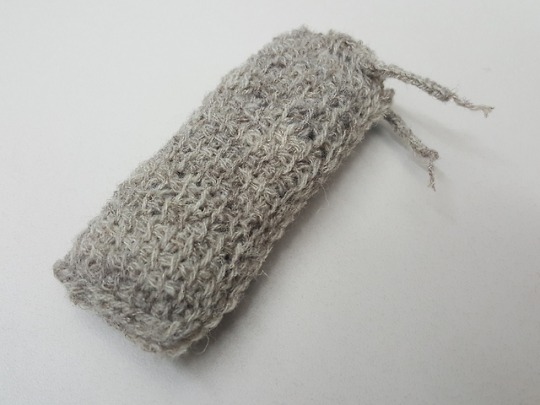

This should have taken me no time at all, but because of my issues with carpal tunnel, it look much longer than that. I made a little pouch for my omnitool from yarn I spun myself. Admittedly, the yarn isn't great because the fiber wasn't great, but this was only my second or so batch of yarn, so I was still practicing with the subprime fiber before moving onto alpaca. It was spun short draw on a supported spindle, and chain plied. I used tunisian crochet, but because I don't have a small enough hook and the piece wasn't very wide, I just used my smallest regular crochet hook. I occasionally did vertically extended stitch rows, which I'm thinking I might use when I crochet my wool yarn into a summer shirt. I had the perfect amount of yarn left over to make lucet cord with it and thread it through the vertical bars of the top row to make a drawstring. I left the tails because when it's open, the cord nearly gets pulled out of the stitches.
7 notes
·
View notes
Photo
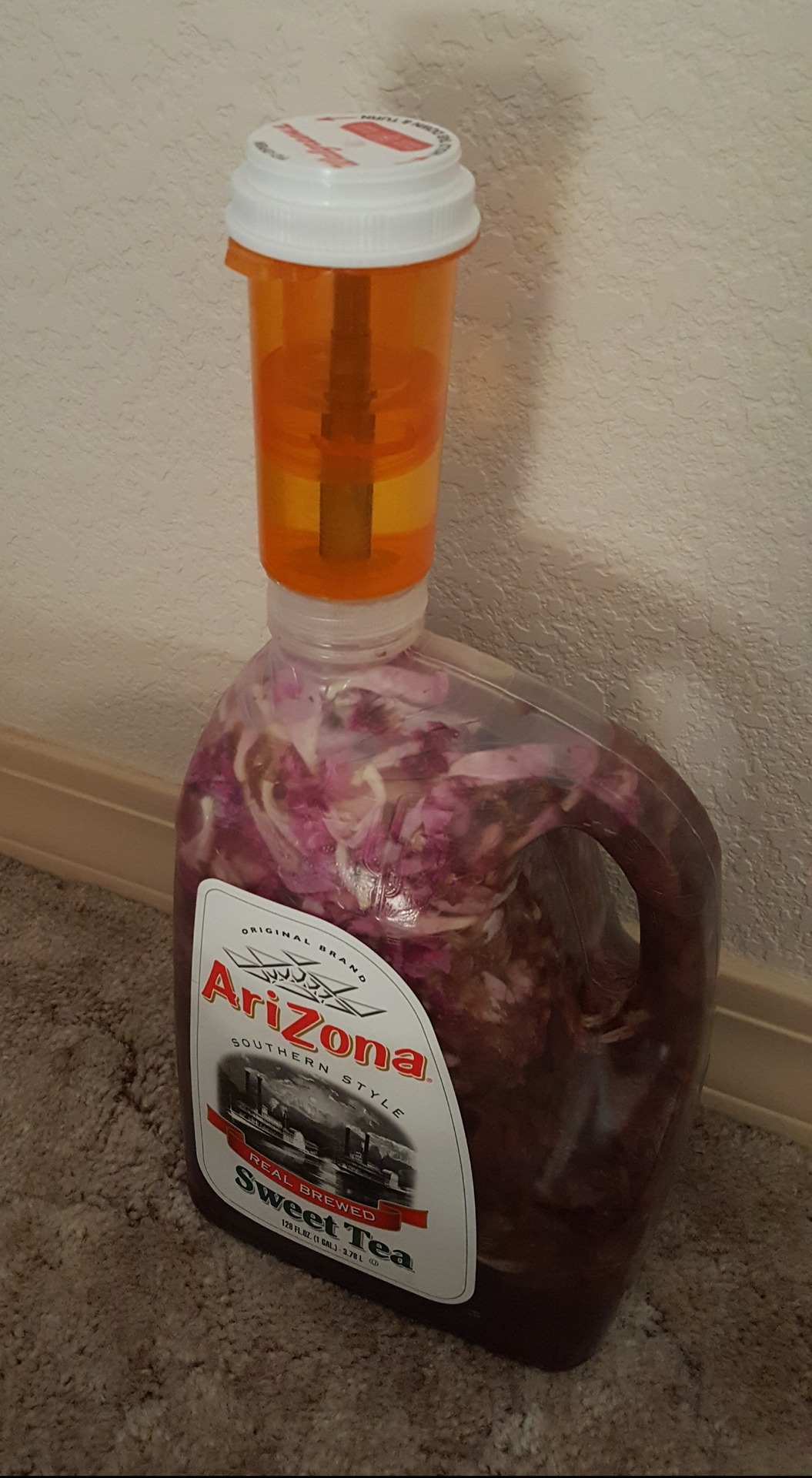
So I haven't made that many attempts at fermenting dyes, but I've done enough to start getting nervous just leaving it in a closed container all day. This particular batch, when half full, would require venting it three times a day. So, I made a simple fermentation airlock for my jug. Then I went ahead and stuffed even more flowers in there. It took some trials to make the airlock completely airtight, but hot glue is really the best sealant. The color honestly isn't great though. It's nowhere near the nice pink/purple color of the flowers, but I'd rather have a completed ugly dye than none at all.
2 notes
·
View notes
Photo

I completed a cylindrical pillow made entirely out of plastic bags. The outside was made using tunisian crochet with plarn, and for the stuffing, I took the bits of plastic left over from making the plarn, and stuffed them into an intact plastic bag just so the tiny fragments wouldn't poke out. I had to use two, which is why the bag looks a bit like a peanut. The end result is firm and squishy, though very audible, of course. I wanted to show that it was possible to make a pillow out of plastic, and of course, I succeeded.
56 notes
·
View notes